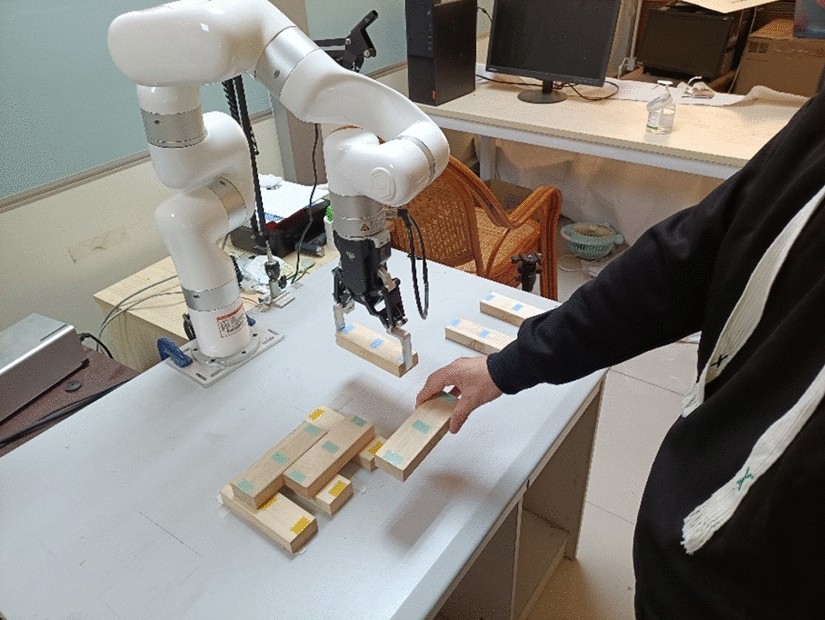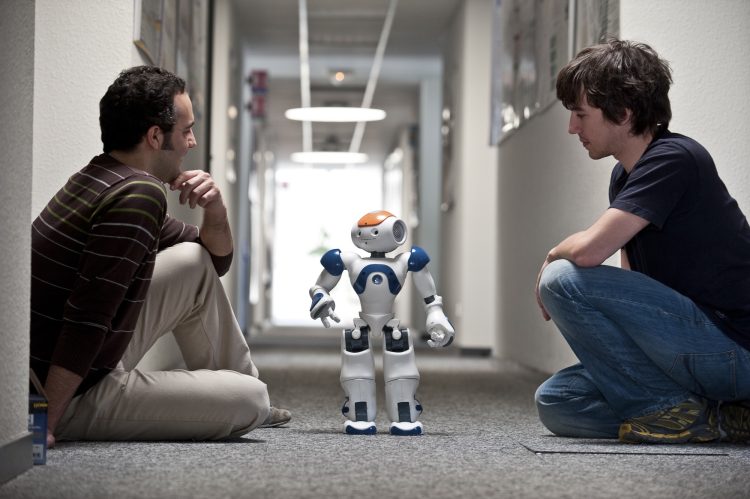Introduction
As artificial intelligence (AI), robotics, and other advanced technologies evolve at an exponential rate, the nature of human-machine relationships is undergoing a fundamental shift. Gone are the days when machines were simply tools to be operated by humans; in the future, these relationships will increasingly be centered on collaboration and complementarity. Rather than replacing human labor, machines and humans will work together to amplify each other’s strengths, enhancing productivity, creativity, and efficiency.
This new paradigm is poised to redefine numerous industries, from healthcare and education to manufacturing and entertainment. The seamless integration of AI and robotics with human expertise will lead to highly sophisticated systems where machines handle repetitive or dangerous tasks, while humans contribute creativity, emotional intelligence, and complex decision-making skills. In this article, we explore the multifaceted dimensions of this evolving relationship, focusing on the potential benefits and challenges of human-machine collaboration, the role of emerging technologies, and the broader social implications of this shift.
1. The Evolution of Human-Machine Relationships
1.1 From Tools to Partners: A Historical Perspective
Historically, machines were invented to increase human productivity, often by automating repetitive or physically demanding tasks. In the early stages of industrialization, machines were seen as tools to be operated by humans—an external extension of human capability. However, as technology progressed, machines began to evolve into more autonomous systems capable of performing tasks with increasing levels of complexity.
By the 20th century, the introduction of computers, robots, and automation led to significant changes in the workplace. Instead of merely augmenting human efforts, machines began to replace human labor in many areas. This triggered concerns about job loss, particularly in sectors such as manufacturing, agriculture, and logistics. However, over time, humans adapted to new roles that machines could not perform, often focusing on jobs that required complex decision-making, emotional intelligence, and creativity—qualities machines were not capable of replicating at the time.
1.2 The Rise of Collaborative Technologies
In the 21st century, the development of artificial intelligence (AI), machine learning, and robotics has paved the way for a new form of human-machine interaction. Rather than merely performing predefined tasks, modern AI systems can learn from experience, adapt to new environments, and engage in problem-solving. Robotics, too, has evolved from simple automation to intelligent systems that can collaborate with humans.
A major shift is taking place: instead of machines replacing human workers, the future will be characterized by a more symbiotic relationship between humans and machines, where each complements the other’s abilities. Human creativity and emotional intelligence, combined with machine precision and computational power, have the potential to unlock unprecedented efficiencies and innovations.
2. The Impact of Human-Machine Collaboration on Various Sectors
2.1 Healthcare: Amplifying Human Expertise in Diagnosis and Treatment
In healthcare, human-machine collaboration is already proving to be a game-changer. AI systems, equipped with deep learning algorithms, can analyze vast amounts of medical data much faster than a human doctor could. They can also detect patterns that might go unnoticed by the human eye, enabling earlier detection of diseases like cancer or cardiovascular conditions.
For example, AI systems like IBM Watson have demonstrated the ability to assist doctors in diagnosing diseases and suggesting personalized treatment plans based on a patient’s genetic data and medical history. However, this does not replace the need for human expertise. AI and machine learning algorithms act as tools that doctors use to enhance their decision-making, not as substitutes for the human touch in patient care.
Moreover, robotics is being integrated into surgical procedures. Robot-assisted surgery, such as the da Vinci Surgical System, allows for greater precision, smaller incisions, and faster recovery times. Surgeons, however, remain essential in overseeing procedures and making critical decisions. The human-machine partnership here improves patient outcomes by combining human dexterity with robotic precision.
2.2 Manufacturing: Automation and Human Expertise in Harmony
In the manufacturing sector, human-machine collaboration has led to the rise of smart factories. Robots and AI systems perform repetitive and hazardous tasks like assembly line work, welding, and quality control. These machines handle tasks that would otherwise put human workers at risk, such as operating in extreme conditions or lifting heavy objects. As a result, workers are freed up to focus on tasks that require problem-solving, innovation, and oversight.
Collaborative robots (or cobots) are an example of machines designed to work alongside humans, rather than replacing them. Cobots are designed with safety features to interact with humans directly, sharing workspace and tasks in a way that boosts efficiency without compromising safety. This integration of robots into manufacturing workflows allows for more flexible, efficient, and personalized production processes.
2.3 Education: Enhancing Learning Experiences through AI and Robotics
The educational sector is another area where human-machine collaboration holds immense promise. AI systems can tailor learning experiences to the individual needs of students, adjusting difficulty levels and providing instant feedback. For instance, AI-driven tutoring platforms, like Socrative and Khan Academy, can offer personalized instruction in subjects such as mathematics, science, and languages, allowing students to learn at their own pace.
However, the role of human educators is not diminished in this process. Teachers remain critical for fostering creativity, emotional intelligence, and social development, areas where AI and machines currently fall short. In the future, teachers will likely work alongside AI tools to deliver more effective, customized learning experiences that leverage the strengths of both human intuition and machine efficiency.
2.4 Customer Service and Retail: AI-Powered Personalization
In customer service, AI-driven chatbots and virtual assistants are already providing efficient and personalized experiences for consumers. These AI systems can handle routine queries, manage bookings, and even suggest products based on customer preferences and previous purchases. This allows human customer service representatives to focus on more complex issues, such as conflict resolution or providing emotional support to customers.
In retail, AI-powered recommendation systems, like those used by Amazon and Netflix, analyze customer behavior to suggest products or media tailored to individual tastes. This personalization enhances the customer experience, while human employees focus on tasks such as sales, customer relations, and inventory management.

3. Key Benefits of Human-Machine Collaboration
3.1 Increased Efficiency and Productivity
By working together, humans and machines can achieve far more than either could alone. Machines excel at repetitive, time-consuming tasks that require high levels of precision, while humans bring creativity, judgment, and adaptability to the table. The combination of these strengths leads to greater productivity, faster problem-solving, and more efficient workflows across industries.
For example, in an office environment, AI systems can automate administrative tasks such as scheduling meetings, managing emails, or analyzing large datasets. This allows employees to focus on higher-level activities like strategic planning, creative thinking, and relationship building, ultimately improving the organization’s overall performance.
3.2 Enhanced Innovation
The collaboration between humans and machines is not just about improving efficiency—it’s also about driving innovation. Machines can process vast amounts of data quickly and identify patterns or trends that would take humans years to uncover. With AI and machine learning, engineers can design new products, simulate testing scenarios, and optimize existing designs at a pace that would be impossible without machine assistance.
At the same time, humans contribute the vision and creativity needed to push these innovations forward. They bring the intuition to see possibilities that machines cannot, ensuring that technological advancements align with human values and societal needs.
3.3 Expanding Human Capabilities
One of the most exciting aspects of human-machine collaboration is the potential to augment human capabilities. For example, with the help of exoskeletons and robotic prosthetics, individuals with physical disabilities can regain lost mobility. AI systems can enhance human cognitive abilities, such as memory and decision-making, through neurotechnology, allowing individuals to process information faster and more accurately.
Moreover, human creativity and emotional intelligence will continue to play a critical role in a world where machines assist with more technical tasks. Machines may be able to analyze data, but it’s human intuition and empathy that can guide the decision-making process in complex, real-world situations.
4. Challenges to Overcome in Human-Machine Collaboration
4.1 Addressing Job Displacement Concerns
One of the major concerns surrounding the increased automation of tasks is the potential for job displacement. As machines take on more tasks, there is a risk that certain jobs, particularly those in manual labor or routine administrative roles, may be rendered obsolete.
However, this issue can be mitigated through upskilling and reskilling programs, which ensure that workers can transition into roles that require more complex, creative, and human-centric skills. Governments, educational institutions, and businesses must collaborate to provide workers with the tools and training they need to thrive in a world of human-machine collaboration.
4.2 Ethical and Privacy Concerns
The increased reliance on AI and robotics raises ethical and privacy issues. As machines gain access to more personal data and make decisions based on this information, concerns about privacy, data security, and bias in AI algorithms become more pressing. Additionally, there are questions about accountability and responsibility when machines make mistakes or cause harm.
Ensuring ethical AI development and robust data privacy protections will be crucial to fostering a positive, transparent relationship between humans and machines. Governments, tech companies, and researchers will need to work together to develop guidelines and regulations that balance innovation with ethical considerations.
Conclusion
The future of human-machine relationships is one of collaboration, where humans and machines complement each other’s strengths to achieve extraordinary results. By focusing on the synergies between human creativity and emotional intelligence, and the precision and computational power of machines, we can unlock new possibilities for innovation, efficiency, and productivity across various sectors.
While challenges remain—particularly around job displacement, privacy, and ethical concerns—the potential for human-machine collaboration is vast and transformative. As we move into this new era, we must ensure that these advancements benefit all of society, creating a future where both humans and machines can thrive together.











































